We work with Wordstat correctly. Complete guide
- Tutorial

Habr, hello!
Many people do not know how to work with trends on the Internet, where to look for them. Before starting a business they don’t know where to see if this business will be popular at all and whether it is needed. Therefore, I will write a full tutorial to close all questions on this topic.
We will work with a special service for collecting search queries of Yandex users by Wordstat , whose interface is quite simple and understandable:

In the beginning, by tradition, I will set goals:
- Understand all the functionality and learn how to work with Wordstat;
- How to collect semantics with maximum relevance and CTR> 50%;
- Since we are on Habré, we will work with the Wordstat API directly.
The key role of the service lies in the fact that it helps to evaluate user interest in trends, various topics and select keywords for contextual advertising.
Acquaintance with the service
In order to start using Wordstat we need to log in to your Yandex account:

After logging in, we can use the service. Viewing the data of search queries is available to us in the “By words” tab:
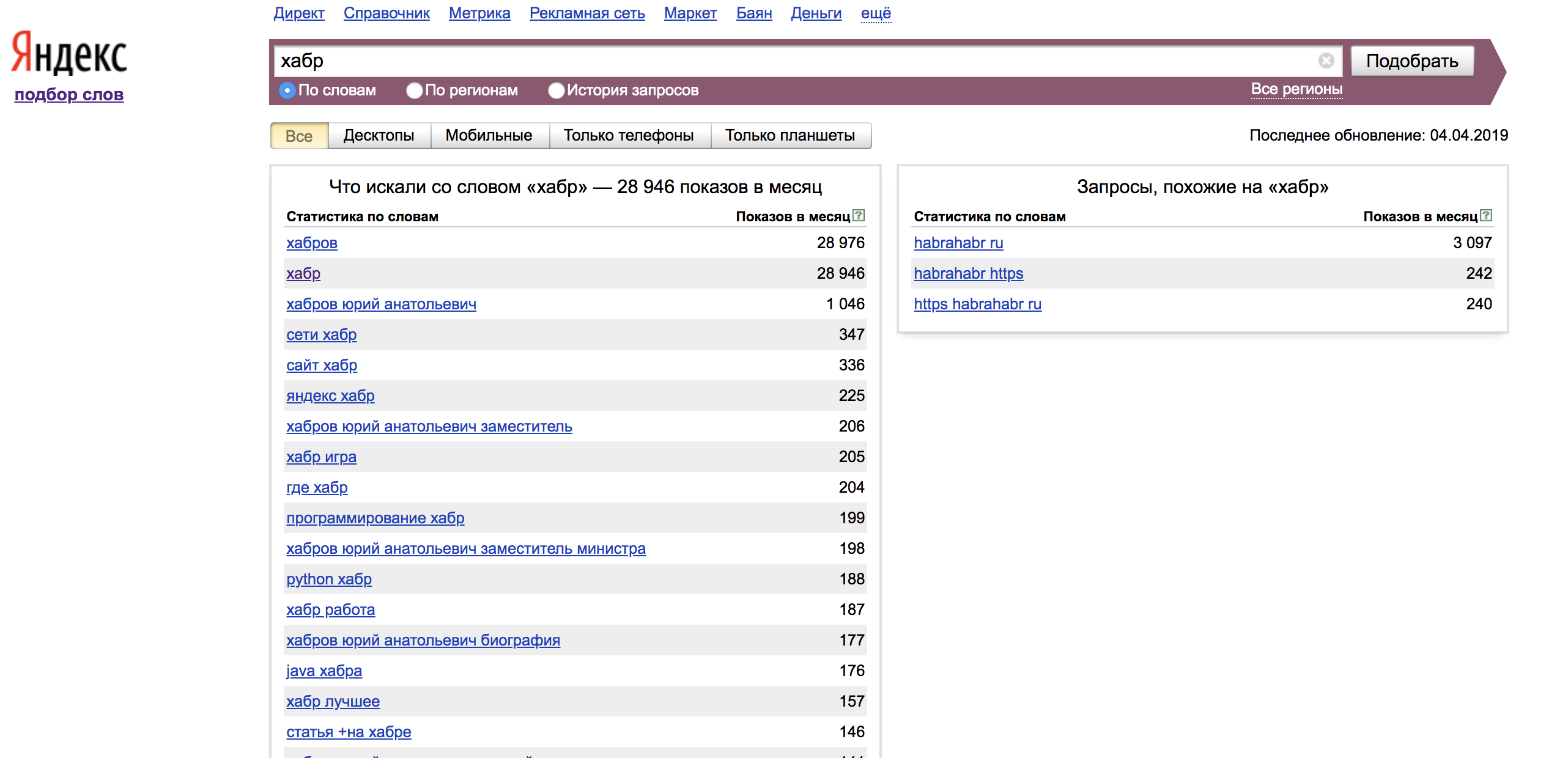
In the left column we see statistics on the words that were with your search query and impressions per month for them. In order for us to find our word in exact correspondence, we must use operators . In the right column, similar in meaning queries are shown for the phrase we set.
A good example of using keywords with operators:
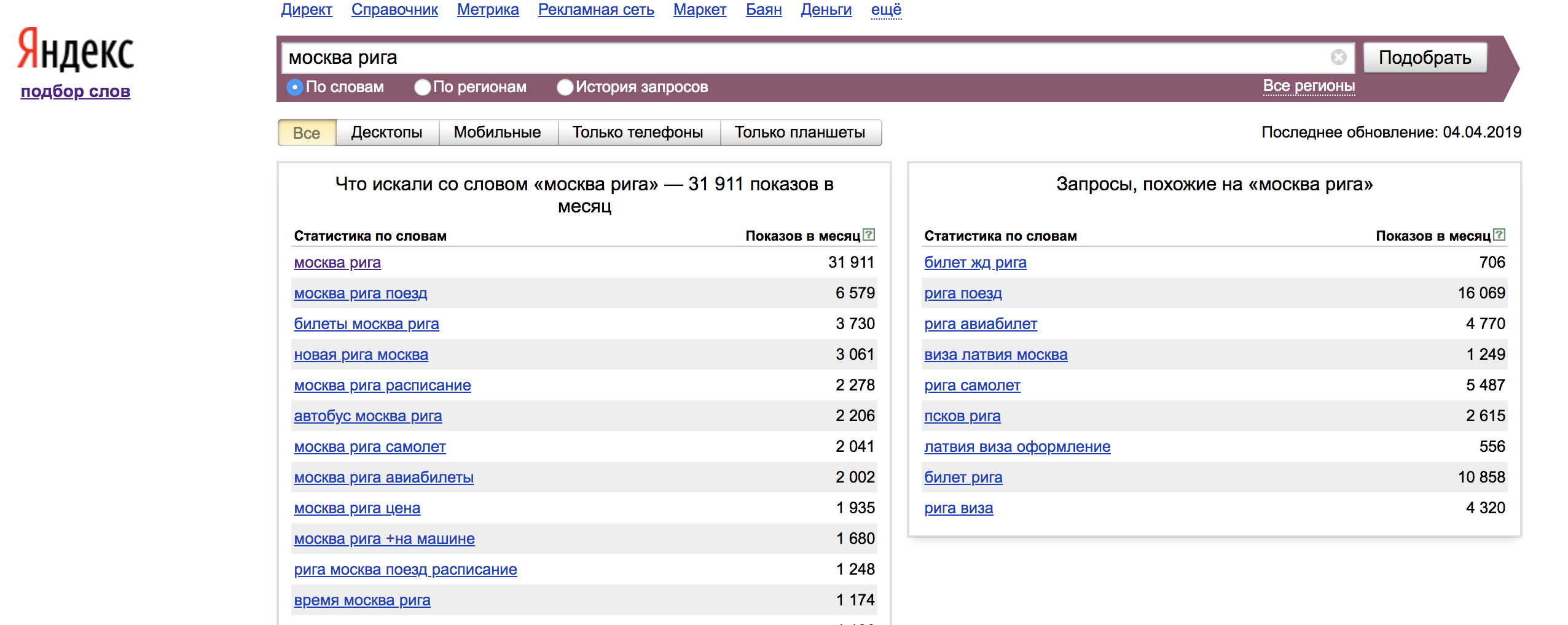
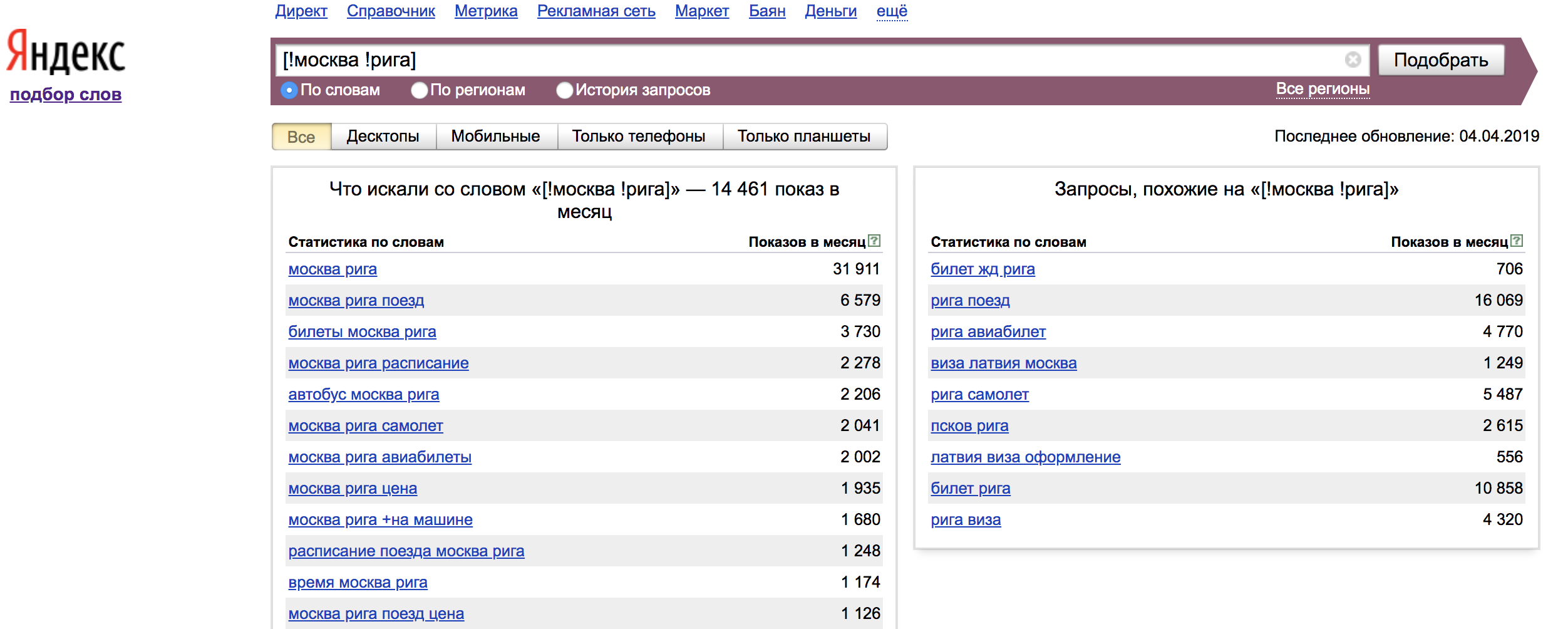
The operator "!" - fixes the form of the word (number, case, time);

Operator "[]" - Fixes the word order. In this case, all word forms and stop words are taken into account.

Read more about operators here .
By default, Wordstat shows requests for all types of devices. Settings can be changed: desktop / mobile / phones only / tablets only. In our case, we only filter desktops.

By default, statistics are shown for all regions. You can choose to display statistics for the region of interest to us in the "All Regions"
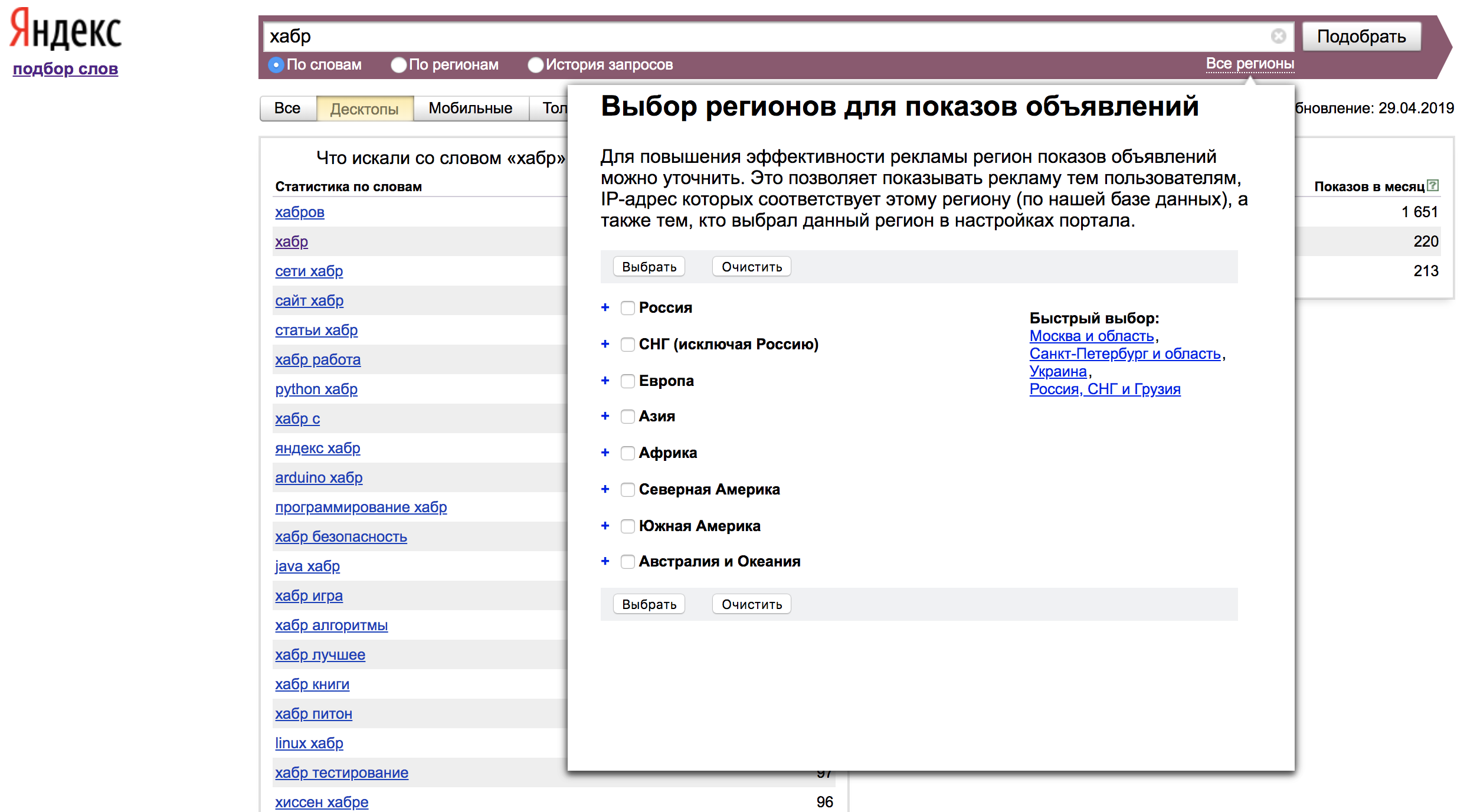
tab : In the "By Regions" tab, data from all regions are displayed, as well as regional popularity - the share that the region occupies in impressions by word, divided by the share of all impressions of search results, attributable to this region.
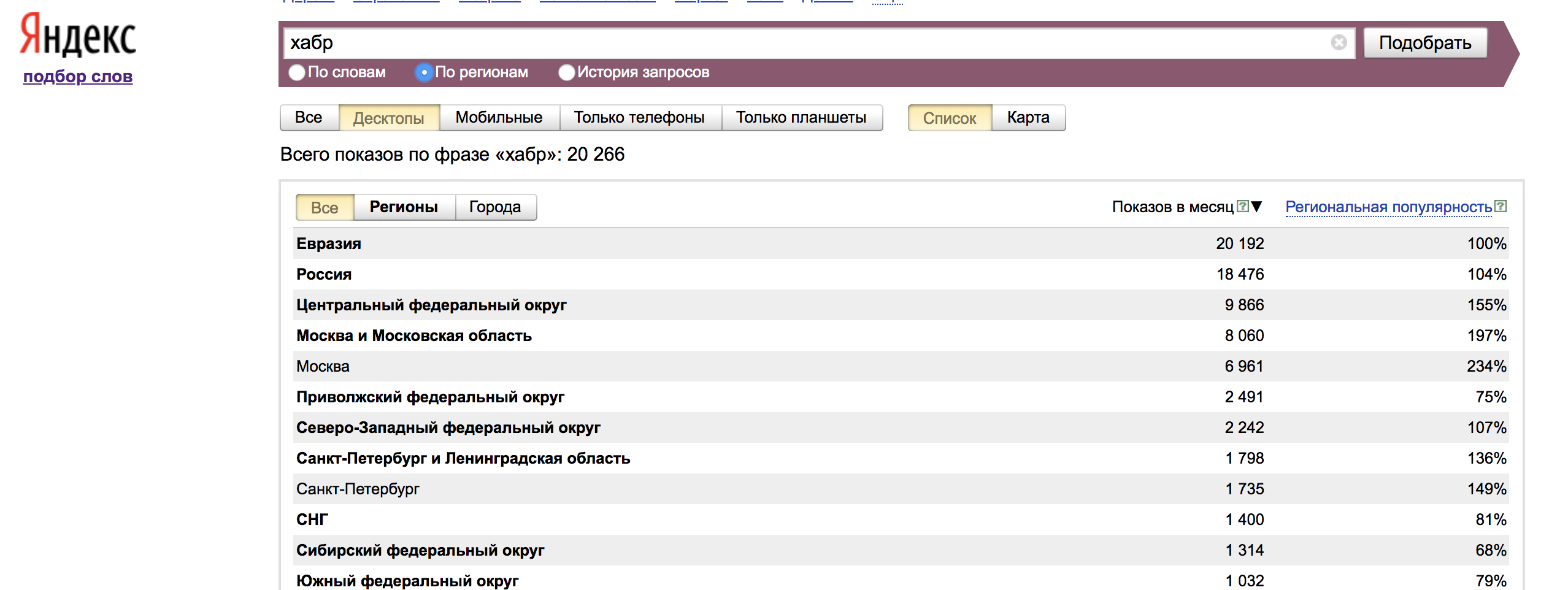
For convenience, the same data is displayed on the map:
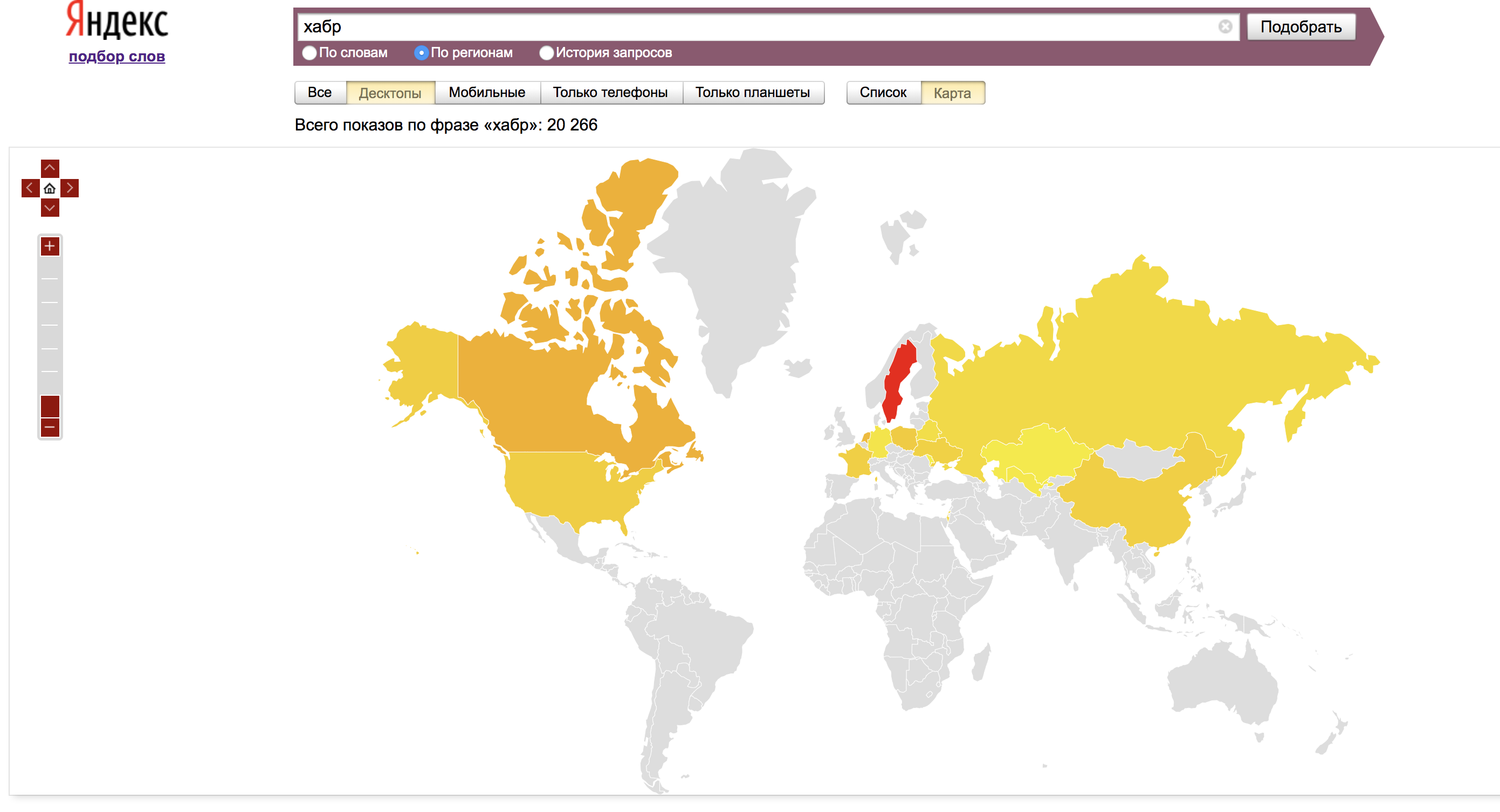
In the “Query History” tab, we see data on the request, usually for 1.5 years. Here we can clearly evaluate the trends and their influence on certain requests.
Statistics can be viewed both in absolute values and in relative values. To obtain a relative value, the absolute figure is normalized to the number of impressions of Yandex search results for the corresponding month.
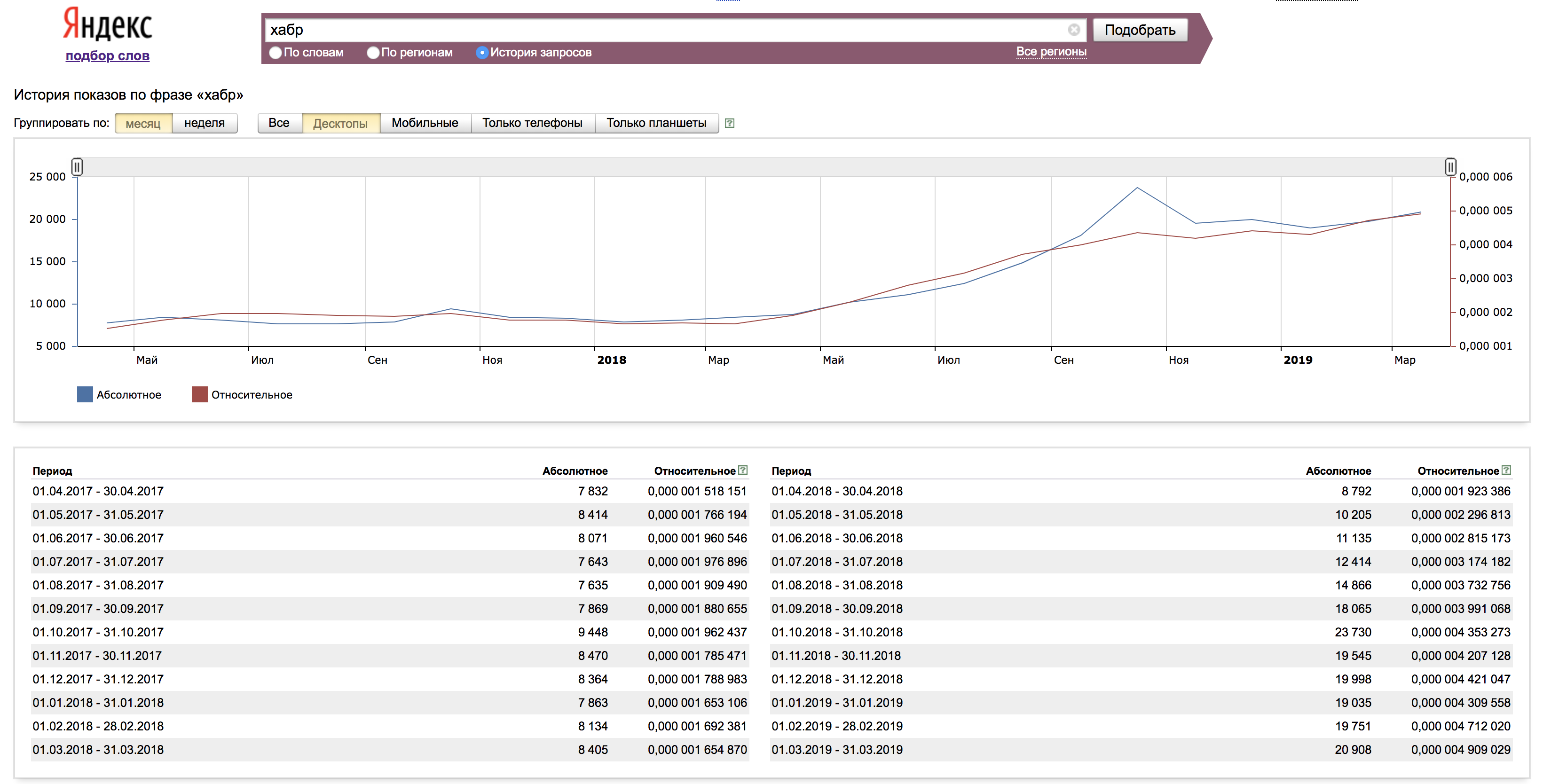
On this study of tools, you can finish and proceed to our next goal - the correct collection of the semantic core.
The correct collection of the semantic core
On the Internet, a lot of services and methods for collecting the semantic core, as well as its artificial creation. We will not create a bicycle and dance with a tambourine, but we will collect semantics easily, simply and for free.
In order for us to collect our semantics, the first thing we do is download the latest version from the Yandex official website Yandex Direct Commander .
After downloading, run the program, log in and create (no matter what name) the campaign:

Add a group of ads (as before, there’s no sense bothering with its name):

Go to the “Phrase Selection” tab, and voila! This is the same Wordstat, only in the Direct Commander program. The logic of working with it is the same, only unlike the web version of Wordstat, here we can immediately indicate minus words:
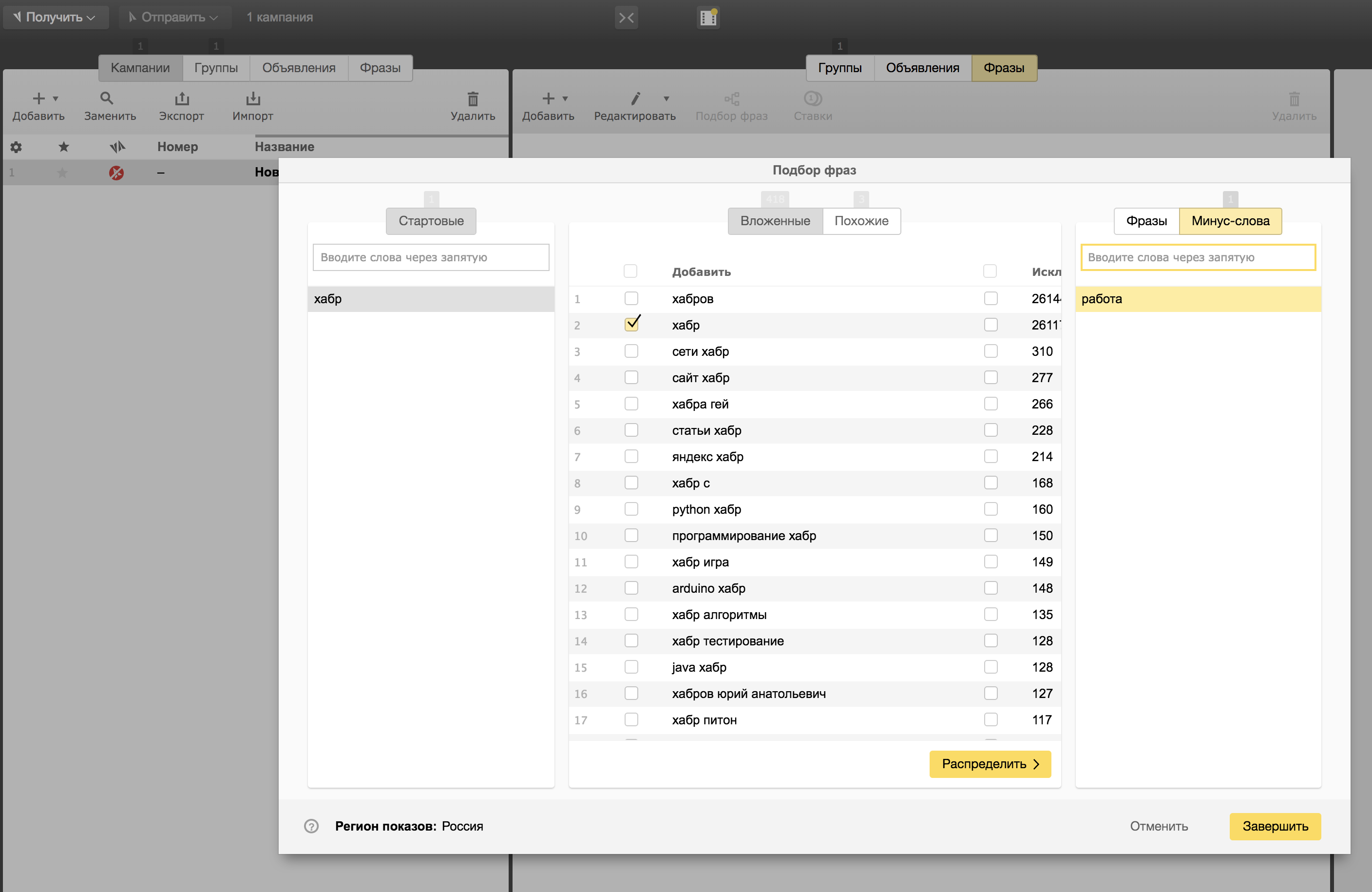
After we carefully filter the entire list of search queries from unnecessary queries, we can proceed to export our campaign to a csv file. All that remains for us to do is remove the extra columns. Our semantic core is located in the column “Phrase (with negative keywords)”:
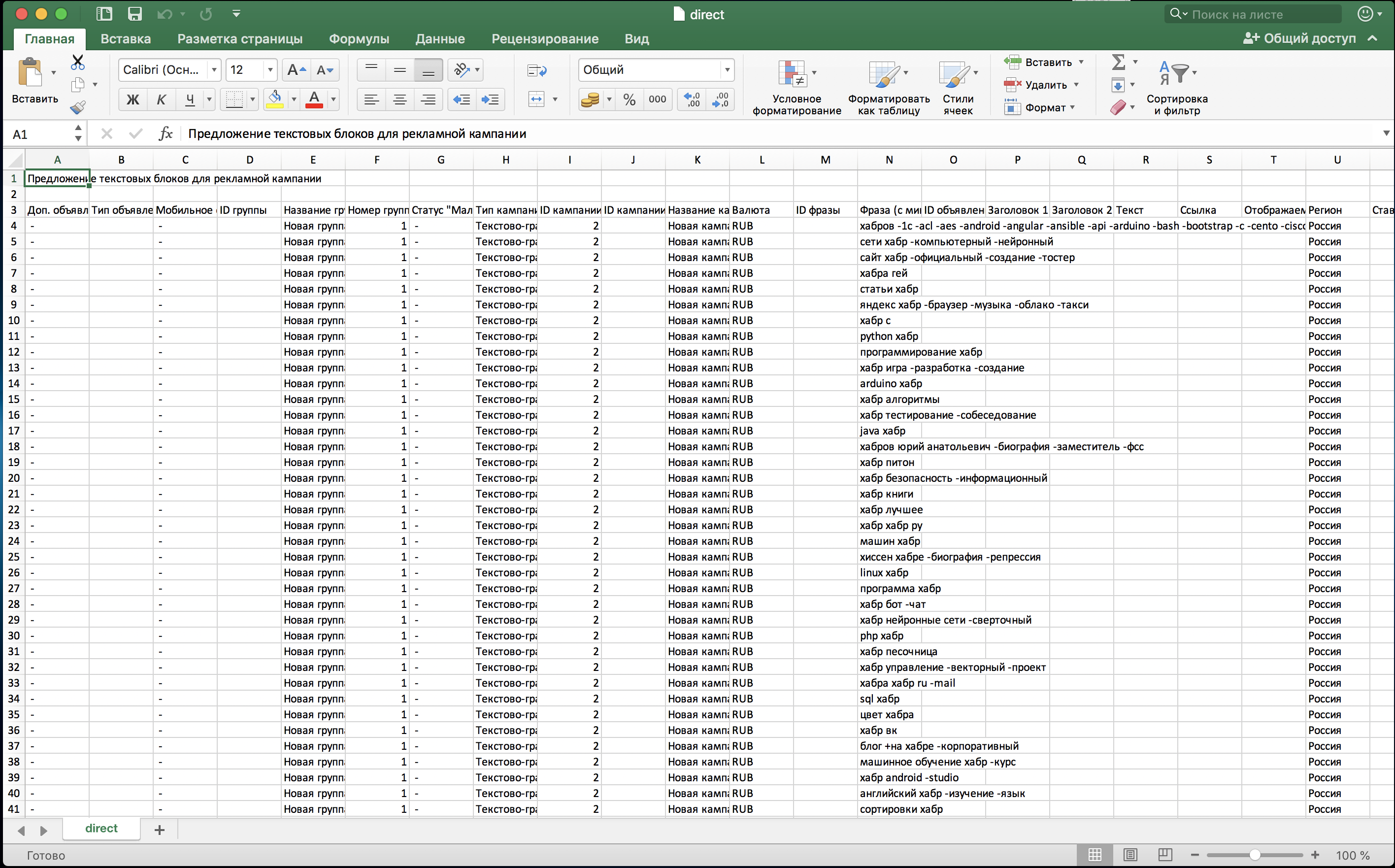
Pros of collecting semantics in this way:
- Coverage of requests with a frequency of up to 1 per month;
- We are not building up artificial semantics, in which there will probably be queries that actually do not exist in the real search history;
- We increase the CTR of ads as much as possible (of course, not only due to the semantics, but also the proper breakdown of the ads into query clusters and their texts. However, all this is based on our semantics);
- Clicks are getting cheaper for us;
- It is absolutely free.
Work with the Wordstat API
Before you begin, we’ll get acquainted with the basic information from Yandex.Direct Help.
FAQ for API Wordstat
Description of parameters
Required GET parameters
request - Request data
GET parameters
lr - region code, if 0 - then all regions
imp - if 1 - then an important request
Answer contains
status - Status code (0 - no errors)
err_msg - Error text
data - Number of hits per month
Codes from Yandex are used to indicate the region. Download the list of regions by the link
status!=0){
echo $json->err_msg;
exit;
}
echo $json->data . " показов в месяц. ";
?>
Result:
{"status": 0, "err_msg": "OK", "data": "11284", "date_update": "04/29/2019"}
That's all the goals that we set for ourselves at the end of the article were achieved.
All knowledge!
